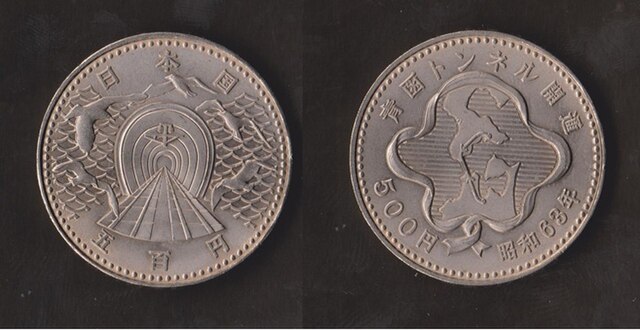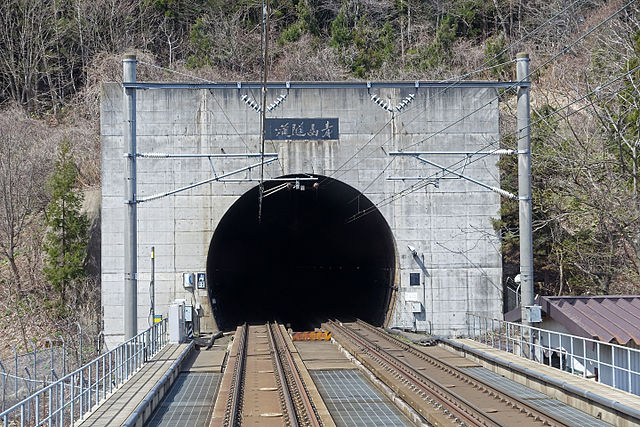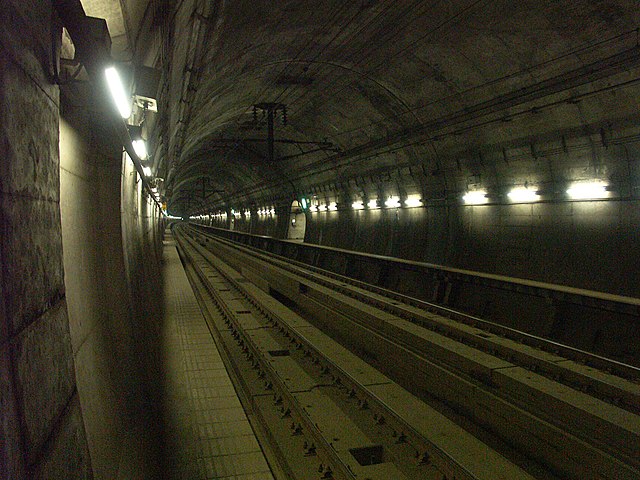The Seikan Tunnel is a 53.85 km (33.46 mi) dual-gauge railway tunnel in Japan, with a 23.3 km (14.5 mi) portion under the seabed of the Tsugaru Strait, which separates Aomori Prefecture on the main Japanese island of Honshu from the northern island of Hokkaido. The track level is about 100 m (330 ft) below the seabed and 240 m (790 ft) below sea level. The tunnel is part of the standard-gauge Hokkaido Shinkansen and the narrow-gauge Kaikyō Line of the Hokkaido Railway Company 's Tsugaru-Kaikyō Line. The name Seikan comes from combining the on'yomi readings of the first characters of Aomori (青森), the nearest major city on the Honshu side of the strait, and Hakodate (函館), the nearest major city on the Hokkaido side.
1988 Seikan Tunnel 500 yen coin
Train approaching Tappi-Kaitei Station, in July 2008
Entrance to the tunnel from Honshu side. The dual gauge tracks are visible
Yoshioka-Kaitei Station platform in the Seikan Tunnel
In railway engineering, "gauge" is the transverse distance between the inner surfaces of the heads of two rails, which for the vast majority of railway lines is the number of rails in place. However, it is sometimes necessary for track to carry railway vehicles with wheels matched to two different gauges. Such track is described as dual gauge – achieved either by addition of a third rail, if it will fit, or by two additional rails. Dual-gauge tracks are more expensive to configure with signals and sidings, and to maintain, than two separate single-gauge tracks. It is therefore usual to build dual-gauge or other multi-gauge tracks only when necessitated by lack of space or when tracks of two different gauges meet in marshalling yards or passenger stations. Dual-gauge tracks are by far the most common configuration, but triple-gauge tracks have been built in some situations.

Baseplate on dual-gauge track showing the minimum practicable gap between the bases of two rails – about 40 mm (11/2 in) – which determines the minimum difference in gauges possible in a three-rail configuration
The Gorton Foundry of Beyer, Peacock & Company was typical of locomotive and rolling stock manufacturers that exported to many countries. This track of four gauges traversed two turntables, requiring the rails to be centralised.
Image: Dual gauge tracks (1600 mm and 1000 mm) at Belo Horizonte, Brazil(cropped)
Image: Wallaroo dual gauge railway 0855








